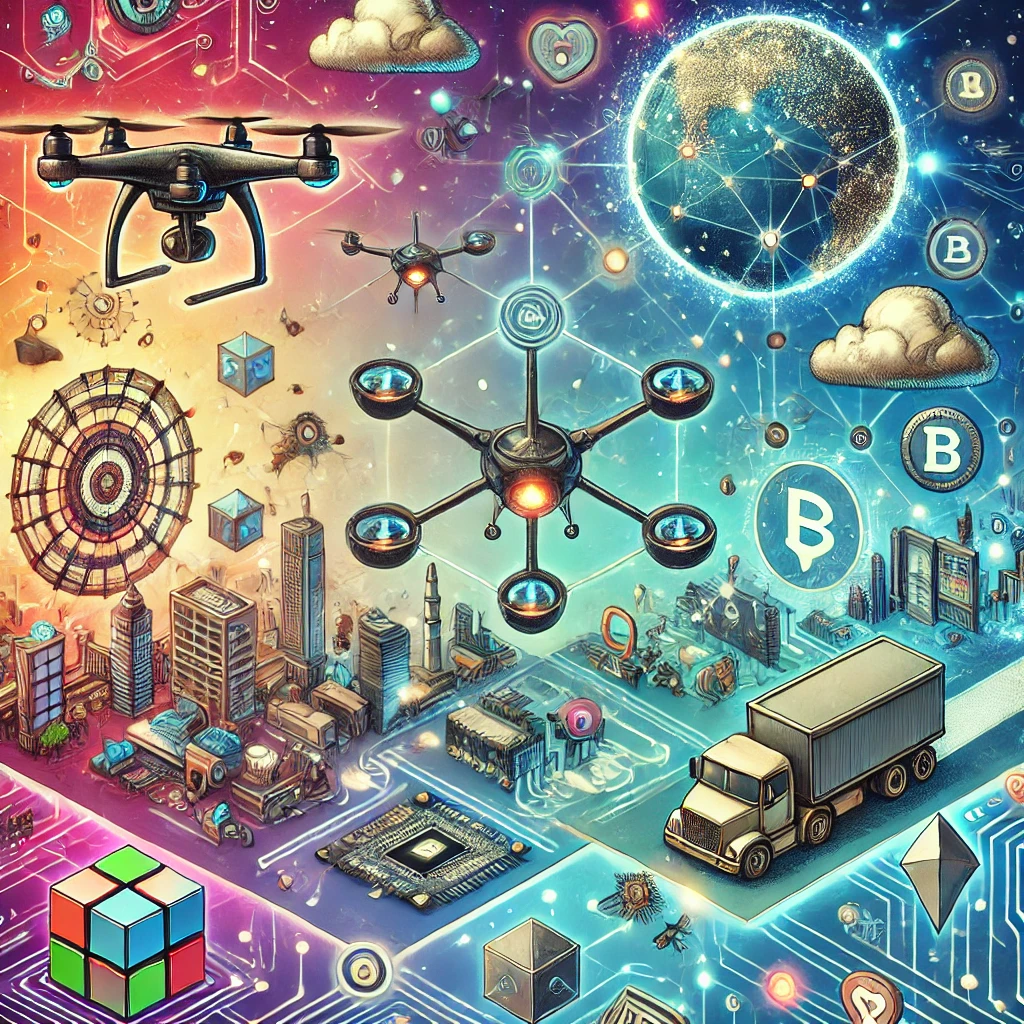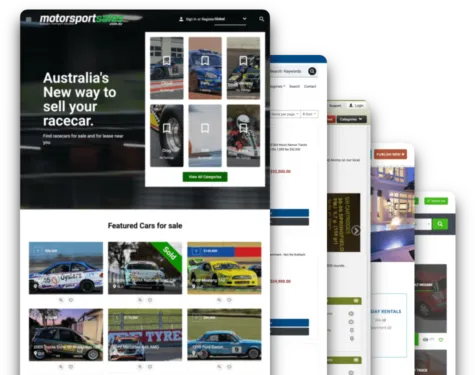Online marketplaces have become a cornerstone of modern commerce, enabling seamless transactions between buyers and sellers.
While these platforms are already reshaping industries, a new wave of innovation is poised to supercharge their potential: the Internet of Things (IoT)!

IoT connects physical devices to digital networks, enabling real-time data exchange and intelligent automation.
In this article, we’ll explore how IoT could revolutionize online marketplaces, delving into its transformative impact on user experiences, operational efficiency, and long-term strategies.
Key Takeaways from the Article
| Section | What You'll Learn |
|---|---|
| Introduction to IoT | Basics of IoT and its growing role in various industries. |
| Impact of IoT on Marketplaces | How IoT can enhance customer experiences and streamline backend processes. |
| Challenges and Solutions | Key challenges in integrating IoT and practical solutions for overcoming them. |
| Future Trends | Predictions on how IoT will continue to shape marketplaces in the coming years. |
| Real-Life Case Studies | Examples of businesses successfully integrating IoT into their marketplaces. |
Understanding IoT: A Brief Introduction
The Internet of Things refers to a network of physical devices—ranging from smart appliances to industrial machines—interconnected to share and act on data.
These devices leverage sensors, software, and connectivity to gather and analyze information, often without human intervention.
IoT in Context
- Consumer IoT: Devices like smart speakers, wearables, and home automation tools.
- Industrial IoT (IIoT): Equipment used in factories, supply chains, and logistics.
- Market Size: By 2025, the IoT ecosystem is expected to include over 75 billion devices, driving a market value of $1.6 trillion.
How IoT is Transforming Online Marketplaces
Enhanced Customer Experience
Customer satisfaction is a critical metric for online marketplaces, and IoT technologies are enhancing this in revolutionary ways.
Personalized Shopping
- IoT devices, such as fitness trackers, can feed data into marketplaces to recommend relevant products like workout gear or nutritional supplements.
- Smart mirrors and virtual reality fitting rooms (powered by IoT) enable customers to try on products virtually before purchasing.
Voice-Activated Shopping
- Voice assistants like Amazon Alexa and Google Assistant are redefining e-commerce.
- By integrating with IoT, these systems allow users to place orders, check shipping updates, or reorder items seamlessly.
- Voice commerce is expected to drive $40 billion in sales by 2024.
Real-Time Inventory Management
- IoT-enabled "smart shelves" equipped with sensors can alert sellers when stock is running low.
- Automatically update product availability for customers.
Operational Efficiency
Smart Warehousing
- Robotics and IoT sensors optimize inventory storage and retrieval.
- For example, Alibaba employs IoT-enabled robots that sort, pack, and ship products efficiently, reducing operational costs by 70%.
Predictive Maintenance
- IoT monitors the health of warehouse equipment to prevent breakdowns.
- Sensors identify potential failures and notify operators for proactive repairs, minimizing downtime.
Smart Logistics
- Delivery processes are becoming more transparent and efficient with IoT tools.
- GPS Tracking: Ensures precise delivery routes.
- Temperature Monitoring: Maintains optimal conditions for perishable goods during transit.

Challenges of Integrating IoT in Marketplaces
1. Data Privacy and Security
IoT devices collect vast amounts of user data, raising concerns about breaches and misuse.
Solutions:
- Encryption, multi-factor authentication, and data anonymization can mitigate risks.
- Regular audits and compliance with global privacy regulations, like GDPR, build consumer trust.
2. High Initial Costs
Building an IoT-enabled ecosystem can be capital-intensive, requiring investment in infrastructure, devices, and skilled personnel.
Solutions:
- Start small by focusing on high-impact IoT applications, such as predictive analytics.
- Partner with IoT service providers to reduce upfront expenses.
3. Interoperability Issues
IoT devices often operate on different protocols, creating compatibility challenges.
Solutions:
- Adopt standardized frameworks like MQTT (Message Queuing Telemetry Transport) to ensure seamless integration.
![]()
Real-Life Examples of IoT in Marketplaces
- Amazon Go: Sensors and cameras detect products picked up by customers. Payments are charged automatically as they leave the store.
- eBay’s Connected Insights: eBay leverages IoT data from devices to offer tailored deals to customers based on their browsing and purchasing behavior.
- Walmart’s IoT Refrigeration: Walmart uses IoT sensors to monitor refrigeration units in stores, ensuring food safety and minimizing waste.

Future Trends and Predictions
- Hyper-Personalized Shopping: For instance, a smart refrigerator could automatically order groceries when supplies run low.
- Blockchain and IoT: Blockchain will address IoT security concerns, creating tamper-proof records of transactions.
- Autonomous Deliveries: IoT will power drone and autonomous vehicle deliveries, making logistics faster and more cost-effective.

Conclusion
The Internet of Things is reshaping online marketplaces, bringing a new era of interconnectivity and intelligence.
From personalized shopping to operational efficiencies, IoT offers a multitude of benefits for businesses and consumers alike.
While challenges such as security and cost remain, they can be mitigated with strategic investments and robust planning.
As IoT evolves, it promises to redefine how we interact with online marketplaces, paving the way for smarter, more efficient platforms.
Looking to Create a Marketplace? Contact Us at Yclas.
References
- Statista. (2023). IoT Devices and Market Projections.
- McKinsey & Company. (2024). The Role of IoT in Business Operations.
- Forbes. (2024). IoT’s Impact on Retail and E-Commerce.
- Amazon Case Study. (2023). Cashierless Shopping with IoT.
- TechCrunch. (2024). Voice Commerce Trends and Predictions.
- eBay. (2023). Leveraging IoT for Enhanced Customer Experiences.
Frequently Asked Questions (FAQs) About IoT and Online Marketplaces
Q1: What is the Internet of Things (IoT)?
A: The Internet of Things (IoT) refers to a network of interconnected physical devices that can collect, share, and act on data through the internet without human intervention. Examples include smart home devices, wearables, and industrial sensors.
Q2: How can IoT improve customer experiences in online marketplaces?
A: IoT enhances customer experiences by enabling personalized shopping recommendations, voice-activated purchases, and real-time inventory updates. Devices like smart mirrors and virtual fitting rooms also make online shopping more interactive.
Q3: How does IoT improve operational efficiency in marketplaces?
A: IoT streamlines operations by enabling smart warehousing, predictive maintenance, and efficient logistics. For instance, sensors can optimize inventory management, while GPS tracking and temperature monitors improve delivery systems.
Q4: What are the challenges of integrating IoT in online marketplaces?
A: Key challenges include data privacy and security concerns, high initial costs, and interoperability issues between devices. Addressing these requires robust encryption, scalable IoT solutions, and standardized communication protocols.
Q5: Can you provide examples of real-life applications of IoT in marketplaces?
A: Sure! Some examples include:
- Amazon Go: A cashier-less shopping experience using IoT cameras and sensors.
- eBay: Uses IoT data to provide personalized customer insights.
- Walmart: Leverages IoT sensors to monitor refrigeration units and ensure food safety.
Q6: How does IoT enable hyper-personalized shopping?
A: IoT devices collect data on user behavior and preferences. This data is used to tailor recommendations and even automate purchases, such as smart refrigerators reordering groceries when supplies run low.
Q7: What role will blockchain play in IoT-enabled marketplaces?
A: Blockchain will enhance IoT security by creating tamper-proof transaction records. It will also facilitate automated processes through smart contracts, ensuring seamless, secure interactions between IoT devices and marketplace platforms.
Q8: What innovations can we expect from IoT in the future of marketplaces?
A: Innovations include voice commerce advancements, autonomous drone deliveries, and deeper integration of AI to predict customer needs more accurately. IoT will also drive sustainability by optimizing resource usage and reducing waste.
Q9: Is IoT implementation cost-effective for small businesses?
A: While the initial costs can be high, scalable IoT solutions allow small businesses to start small and expand over time. Partnering with IoT service providers can also reduce financial and technical barriers.
Q10: How can businesses prepare for IoT integration in their marketplaces?
A: Businesses should:
- Identify key areas where IoT can provide immediate value (e.g., logistics, customer engagement).
- Invest in secure, scalable IoT solutions.
- Train their teams on IoT applications and data management.
- Partner with trusted IoT vendors for a smooth transition.
Looking to Create a Marketplace? Contact Us at Yclas!

